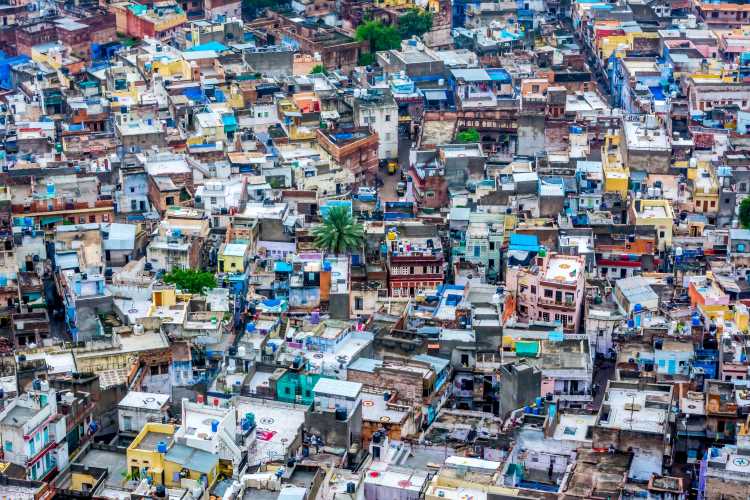
By Ajit Jha
The year 2020 will be remembered as a dark period in the history of humankind. The coronavirus pandemic has spread across 187 countries, dealing telling blows to public health and economies. The deadly virus has already taken more than 2.69 lakh lives and around 3.85 million people have already been infected. At least a third of the world population is under some kind of lockdown. The impact of Covid-19 on the global economy has been dramatic, swift, and more severe than the 2008 financial meltdown and even the Great Depression of the 1930s.
As per the estimates of various international agencies, the world’s largest economies will lose 2.4% of their GDP in 2020. The UN Department of Economic and Social Affairs estimates that the world economy would lose up to 1% of the total GDP. International Labour Organisation says that about 2.7 billion workers representing around 81% of the world’s workforce will be affected by the lockdown. Around 38% of the global workforce employed in sectors such as retail trade, hotels, restaurants and manufacturing are facing the risk of job loss. Remittances, an important source of earning for developing countries, are projected to decline by 20% due to job cuts and fall in wages.
READ: Treat migrant workers with empathy, allow them to go home
No one had anticipated this crisis and therefore no advance preparation could have been done. The economy was already in the grip of a slowdown with unemployment rate, rural income growth and other macro indicators faring poorly. Further a drop in economic growth, rise in unemployment rate, near collapse of the informal sector and the reverse migration from cities created a huge problem for the government. Estimates show that 92% of India’s economy is in the informal sector. Only a third of the total workers get social security benefits. Lockdown and travel ban have hit the migrant workers hard. Around 50 million seasonal and short-term migrants (mostly informal) in cities would like to return home due to wage loss, fear and in anticipation of no work in future. Small businesses and micro and small enterprises have been severely affected by the lockdown. Even the bigger industries are facing similar problems. The automobile giant Maruti Suzuki has reported zero sales in the month of April. According to a World Bank report, 2.8% of India’s GDP comes from remittances. In 2019, India received $83 billion from remittances. It is projected that there will be a 23% fall in remittances in 2020.
Issues raised here show the precarious situation Indian economy is in, but a coordinated effort could help the country sail through the crisis. So far, the union government and some states have taken prompt action to enforce the lockdown as well as to test, trace and contain the spread of the virus. Some effort has also been made to offer short-term relief to daily wagers and informal workers. The government has also received several policy suggestions to give cash benefits to the most vulnerable and provide wage and credit subsidies to micro and small enterprises.
READ: An imperfect future: Imagining the post-Covid world order
A bigger crisis might occur post Covid-19 due to the supply shock and disruption of demand. For that, the government will have to be ready with enough ammunition. Foremost requirement is to set up either an independent committee or a task force under NITI Aayog to evaluate the economic loss in different sectors, suggest special packages for them and to provide compensation to states for the fall in tax revenues. The labour ministry can issue guidelines to implement a staggered work system and a new wage code for workers.
According to Census 2011, about 66 million people live in slums, most of them in large cities. Mumbai’s Dharavi, one of the largest slums in Asia, is badly infected by Covid-19. The government must decongest big slums by building houses under the Prime Minister Awas Yojana. In 2017, a working group on migration was constituted by the ministry of housing and urban poverty alleviation. The government can take a look at the recommendation of the committee that included building a comprehensive database of migrants. To deal with issues of informality, a unified labour market can be created by providing a universal job card seeded with Aadhar to all workers. It will help calculate job years and provide social security benefits.
READ: Foolproof PDS: A practical guide to food security
The most important action needed at this juncture is the creation of jobs and support for micro, small and medium enterprises. In his e-GramSwaraj meeting with sarpanchs, Prime Minister Narendra Modi had emphasized the importance of becoming self-reliant and self-sufficient by looking inside. He talked about the Gandhian vision of village economy. Cities in India have become congested and there is a need to decongest them. This can be possible if we prepare a plan for smart village economy where other than farm, non-farm sectors such as plantation, horticulture, fishing, micro, small and medium enterprises can be promoted. Low- and semi-skilled people can be engaged at the local level and local demand can be met through local production of goods and services. India’s young population, large consumer market and unexploited local resources can be fully utilized in this village-centric development plan.
(Ajit Jha is assistant professor, Institute for Studies in Industrial Development, New Delhi. He can be reached at ajitjha@isid.edu.in)
